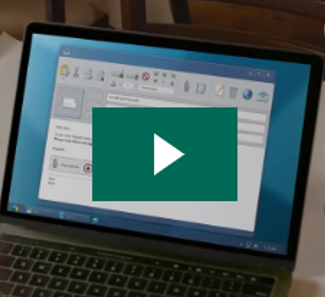What Is Human Risk Management
Human risk management is the practice of educating users to recognize, avoid, and report cyber threats, helping to reduce human cyber risk and protect the organization and its stakeholders.
Why Is Human Risk Management Important?
Human risk management matters because 68% of breaches come down to human error. It helps people recognize and avoid threats like phishing and malicious downloads, reducing risk and creating a stronger, safer workplace.
By targeting risky behaviors and protecting sensitive data—like PII, intellectual property, and account credentials—training keeps organizations secure and compliant with regulations like GDPR. As teams become more security-aware, businesses see fewer cyber incidents, lower costs, higher productivity, and even stronger trust with customers.
CyberHub
Learn Cybersecurity Fundamentals in Minutes
Share cybersecurity best practices with your employees with content kits from the Cybersecurity Hub
What Should a Human Risk Management Program Include
A security awareness program should address specific risks faced by the organization, using real-world examples and engaging formats like microlearning, gamification, and simulations to drive participation and retention.
Key components include risk-based training tailored to employee roles, regular phishing simulations, and clear guidance on reporting suspicious activity. Programs should also cover compliance with data privacy regulations and reinforce the importance of protecting sensitive information like PII and intellectual property.
Finally, ongoing measurement and updates are critical to ensure the program stays effective against evolving threats.

Human Risk Management Kit
This kit will guide you through each step of implementing an effective training program.

Try Gamified Training
Play one of our cyber games to see firsthand how gamified training keeps employees engaged.

Building a Security Awareness Program That Engages and Reduces Human Risk
In this interview, Dane Boyd shares strategies to build a security awareness program that engages your team and drives real behavior change.
 Sample Training Videos
Sample Training Videos
Engaging, bite-sized video content is a powerful component of human risk management, supporting knowledge retention and user engagement. View sample videos showcasing the risks, consequences, and best practices related to a given topic.
Dive into a selection of Fortra's award-winning training content.
FAQs
Experience cybersecurity awareness training that delivers real results. Fortra Human Risk Management offers tailored courses, interactive quizzes, and game-style activities, along with practical tools to fit any industry, organization size, or budget.